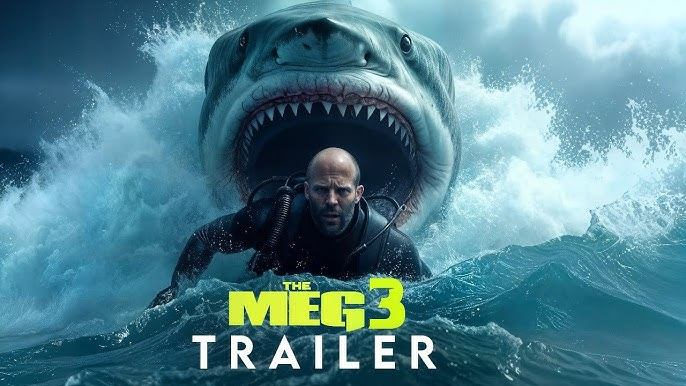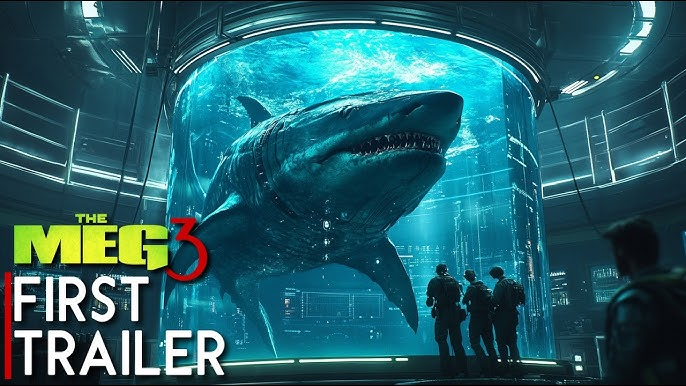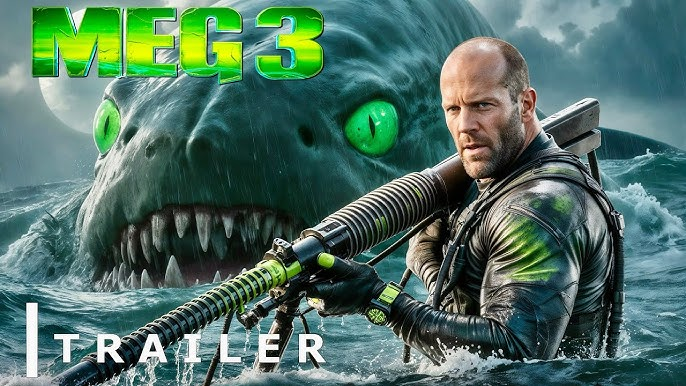The ocean has always been a mystery—vast, beautiful, and merciless. In The Meg 3, that mystery rises once again from the darkest abyss, with teeth sharper, instincts deadlier, and chaos beyond imagination. The film opens not with calm, but with a shiver—an unsettling silence before the ocean itself turns into a living nightmare.

Jason Statham reprises his role as Jonas Taylor, the rugged diver who has faced the impossible twice before. This time, he’s joined by none other than Dwayne “The Rock” Johnson, whose muscular charisma turns the duo into an unstoppable force. Together, they carry the film’s heart and tension, balancing human grit with the crushing pressure of the deep.
The story dives deeper—literally and emotionally. When a newly discovered Megalodon species breaches containment, it’s not just another shark hunt; it’s a full-blown reckoning between mankind and nature’s oldest ruler. The film raises the question: How long can humanity pretend to control what it doesn’t understand?

The action sequences are monumental. Submersibles glide through glowing undersea canyons like fireflies in a nightmare. Then comes the chaos—waves explode, ships are torn apart, and coastal cities tremble as the Meg unleashes prehistoric fury. The direction captures both the elegance of nature’s design and the brutality of survival.
Statham’s performance is grounded, raw, and seasoned with quiet determination. Johnson, as a former Navy rescuer, brings the emotional muscle—his past trauma fuels his courage. Together, they are not just fighting a monster; they are confronting fear itself, in every form it takes.
What makes The Meg 3 stand out isn’t just its visual scale—it’s the way it captures the feeling of insignificance before nature’s power. Every roar of the ocean feels like a reminder that humanity is merely a guest here, fragile and small beneath the surface of eternity.

Visually, the film is breathtaking. The bioluminescent deep-sea sequences glow with otherworldly beauty, contrasting with the carnage above. The CGI has evolved—each scale, ripple, and tooth feels tangible, terrifying, alive. The Meg is not a villain; it’s evolution’s perfection, cold and majestic.
The score, composed of pulsating bass and haunting echoes, pulls viewers into the abyss. Every crescendo feels like a heartbeat underwater—a rhythm of dread and awe. The pacing alternates between unbearable silence and explosive panic, creating a balance that keeps the audience on edge.
Beyond the blood and adrenaline, there’s philosophy here. The Meg represents not just a threat, but the past rising to punish human arrogance. The deeper they dive, the clearer the truth becomes: the ocean does not forgive, and it never forgets.
By the time the final battle erupts—a confrontation that defies physics and sanity—the audience is left breathless, submerged in the chaos. Yet amid the wreckage, there’s a strange beauty: survival isn’t just about strength, it’s about respect for the wild heart of the sea.
The Meg 3 is not just a sequel—it’s a storm of spectacle and soul. Bigger teeth, yes. Bigger waves, definitely. But what lingers long after the credits roll is the feeling of awe—the humbling reminder that the ocean’s deepest monster might not be the Megalodon… it might be us.



